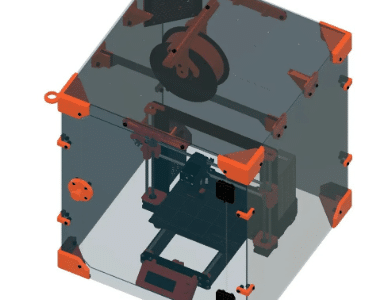
As our cities grow and infrastructure expands, the role of expansion joints in construction becomes increasingly essential. One significant aspect that demands attention is the impact of expansion joints on traffic flow. In this blog, we will explain the expansion joints, focusing on concerns related to traffic and how they can be effectively addressed.
Expansion Joints
Before moving forward with the effects on traffic flow, let’s grasp the basics. Expansion joints are essential components in construction, allowing structures to expand and contract with temperature variations. They play a pivotal role in maintaining the structural integrity of buildings and bridges.
The Basics of Expansion Joints for Bridges
Bridges, with their unique design and purpose, require special consideration when it comes to expansion joints. These joints not only accommodate thermal movements but also ensure the smooth passage of vehicles, making them a critical aspect of bridge construction.
Traffic Flow Concerns:
In the complexity of urban development, the role of expansion joints in construction is absolute. These joints, designed to allow structures to expand and contract with temperature variations, are essential for maintaining the integrity of buildings and bridges. However, as we incorporate these engineering marvels into the fabric of our cities, a valid apprehension arises – the impact of expansion joints on traffic flow.
Reduce Traffic
Show a busy urban road, cars weaving seamlessly, and traffic signals producing the flow. Now, introduce an expansion joint, a necessary component for the structural longevity of the road or bridge. However, these joints serve a vital purpose, they can disrupt the traffic movement of traffic, leading to congestion and delays. It’s a valid concern and one that demands thoughtful consideration.
Disturbance The Flow
Expansion joints, though designed with precision, create interruptions to the otherwise smooth passage of vehicles. The steady drone of tires on the surface can be shortly disturbed as vehicles traverse these joints. In high-traffic areas, this interruption can increase blockage, affecting not only the flow of vehicles but also the overall efficiency of the transportation network.
Significance of Expansion Joints
To manage traffic flow situations, it’s important to understand the specific impact of expansion joints. These joints, often made of materials like steel or rubber, are strategically placed to allow for the expansion and contraction of structures. However, their presence can change the direction of vehicle movement, especially when drivers encounter them suddenly.
Minimize The Impact Of Expansion Joints
The road concerns are valid; mitigation strategies can be employed to minimize the impact of expansion joints on traffic flow. Thoughtful planning in the creation phase, strategic placement of joints in less traffic-sensitive areas, and the use of innovative materials can all contribute to a smoother traffic experience.
Cutting Edge Intervention
Technological advancements are a good opportunity to address traffic flow concerns. Smart sensors fixed in expansion joints can provide real-time data on traffic conditions, qualifying for occupied adjustments to signal timings and traffic management. This innovation not only addresses concerns but also contributes to a more adaptive and responsive city infrastructure.
Safety and Efficiency
As we guide the concerns related to traffic flow, it’s essential to create a balance between safety and efficiency. Expansion joints are not just barriers but essential components protecting the structural strength of our roads and bridges. By adopting measures that enhance safety without compromising traffic efficiency, we can achieve a balanced existence.
Connect With Community
Communication is key. Engaging with the local community, keeping them informed about upcoming construction projects, and explaining the temporary disorders caused by expansion joints help understanding. Community engagement builds a bridge of trust, creating a more cooperative environment during construction phases.
Advantages Of Rubber Expansion Joints:
Rubber expansion joints, often a secret weapon in construction, play a key role in maintaining the structural integrity of buildings and bridges. Beyond their flexibility, these joints offer a range of advantages that contribute to the efficiency and longevity of construction projects.
1. Flexibility and Adaptability
One of the standout features of rubber expansion joints lies in their remarkable flexibility. Unlike rigid materials, rubber can adapt to active movements in structures, accommodating changes without compromising stability. This built-in flexibility makes rubber expansion joints a preferred choice in situations where structural shifts are unavoidable.
2. Durability in Diverse Environments
Rubber’s natural resistance to various environmental factors enhances the durability of expansion joints. Whether facing extreme temperatures, exposure to chemicals, or resisting the impact of weathering, rubber expansion joints stand resilient. This durability ensures the longevity of structures, reducing the need for frequent replacements.
3. Cost-Effectiveness
From an economic perspective, rubber expansion joints present a cost-effective solution. The ease of manufacturing, associated with straightforward installation processes, contributes to lower overall costs. Furthermore, the reduced maintenance requirements over time make rubber expansion joints an economically good choice for construction projects.
4. Reduced Noise and Vibration
Rubber’s damping properties have a positive impact on noise reduction and vibration isolation. In situations where minimizing sound and vibrations is crucial, such as in buildings or bridges near residential areas, rubber expansion joints prove to be effective in creating a more peaceful environment.
5. Multiple Applications in Various Project
The versatility of rubber expansion joints extends beyond their application in bridges. These joints find advantages in various construction projects, including roads, pipelines, and industrial structures. The adaptability of rubber makes it a reliable choice across diverse construction scenarios.
Final Words:
Travelling in cities is much more difficult as compared to rural areas because of the heavy traffic flow on the road. Bridges make the traveling of people very easy, and they can move from one place to another easily. Bridges needs a supportive element to face all kind of climate condition in different cities. Polycrafts made rubber expansion joints for bridges and roads. In addition, the various effects help to increase the sustainability of bridges in adverse traffic flows and maintain the strength of the bridge. A notable brand, Polycrafts, ensures the quality of products and also provides customized rubber-made products for safety and security while driving.
Visit here for more informative blogs



